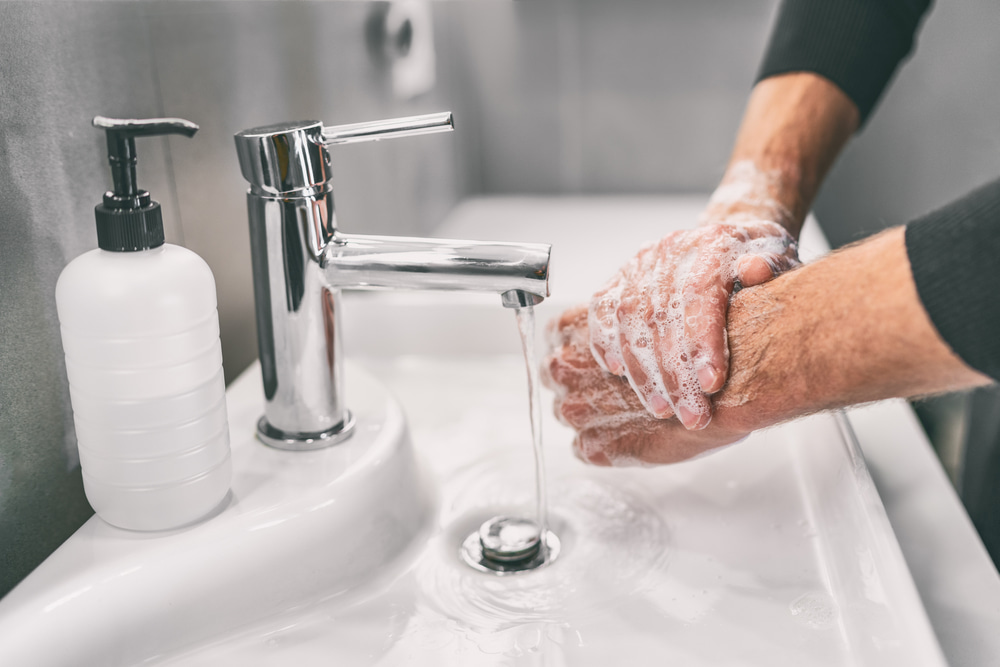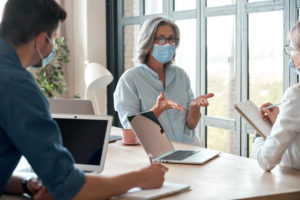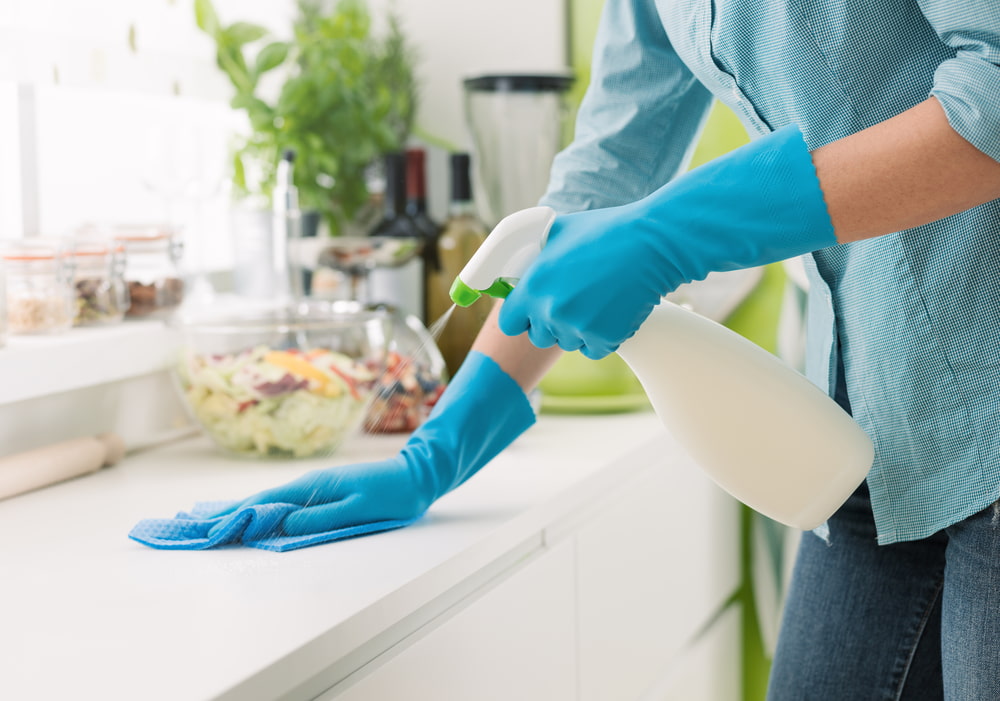
16 Jun What Are Standard Precautions?
Standard precautions are a set of practices required to achieve the basic level of infection control. They’re measures that apply to all individuals, whether or not they seem symptomatic. Standard precautions use personal protective equipment (PPE) and common-sense practices to protect healthcare workers from infections and prevent patient-to-patient transmission of diseases. So, what are standard precautions for infection control? Let’s explore.
Hand Hygiene
Attention to hand hygiene is the most basic precaution but is considered one of the most important infection control measures to prevent or reduce the spread of infections. Hand hygiene refers to any action of cleansing your hands, whether it’s washing with plain soap and water, using antibacterial soap with water, or using an alcohol based hand sanitizer to decontaminate your hands.
Hand hygiene is a standard precaution in healthcare as it reduces the risk of microorganism transmissions. The Center for Disease Control (CDC) guidelines on hand hygiene in the healthcare setting recommends various instances in which hand hygiene should be adhered to and include:
- Before and after contact with a patient or client
- After a procedure or after exposure to blood and body fluids
- Immediately after touching non-intact skin or mucous membranes
- After removing your gloves
- After handling medical equipment or objects in a patient-care vicinity
- Immediately after using the toilet or restroom
- After sneezing or coughing as part of basic respiratory hygiene
Personal Protective Equipment (PPE)

Personal protective equipment is mainly utilized as a last resort if engineering controls and work practices alone can’t eliminate the risk of worker exposure to infectious agents. Different PPE is appropriate for different types of patient interactions, and therefore the items selected for a specific use will depend on the kind of interaction.
Gloves
Wear gloves if there’s any potential for contact with body fluids, blood, non-intact skin, mucous membranes, or contaminated items. Wearing gloves is a must when involved with vascular access. One key point to remember is that gloves are not considered an alternative for hand hygiene. Perform hand hygiene after removing gloves, even if immediately donning a clean gloves.
Face Protection
Wear goggles or a face shield and a surgical mask when there’s potential spray or splash of body fluids, blood, or respiratory secretions that might reach your eyes, nose, or mouth. The use of personal eyeglasses or contact lenses is not considered sufficient eye protection since they don’t offer the needed protection.
Gown
Wear a fluid-resistant gown to protect your skin and clothing when conducting procedures that are likely to produce aspray, spatter, or splash of blood or body fluids to your arms or torso. Once patient care is completed, remove the gown immediately and discard it appropriately. Do not wear the same gown when caring for another patient.
All PPE should be removed promptly after use, followed by hand hygiene. Adhering to the proper removal of PPE is also vital because it prevents contamination of clothing and skin. According to the Occupational Health and Safety Administration (OSHA), PPE standards 1910.132 and .133, all employers must provide PPE for employees exposed to hazards at their workplace.
Sharps Safety
Safe handling of sharps, including needles, percutaneous venous access devices, and sharp instruments, is a crucial standard precaution for infection control that prevents healthcare workers from bloodborne pathogens. Sharp injuries pose the risk of bloodborne pathogens to healthcare workers and patients. When working around or using sharp objects, OSHA mandates engineering or work practice controls as primary standard precautions to reduce bloodborne pathogen exposure, such as:
- Safety devices on sharps like needles should be activated directly after use.
- Used disposable syringes, scalpel blades, needles, or other sharp objects should be discarded immediately after use.
- Used or contaminated sharp items should be discarded in an appropriate leak-proof and puncture-resistant container that’s labeled with a biohazard label.
- Sharps containers should not be filled to the brim. They should be disposed of once they’re 2/3 full and should follow the local and state-regulated medical waste rules.
Safe Injection Practices
What are standard precautions for injection safety? Safe injection practices are crucial standard precautions in healthcare meant to prevent the transmission of infectious diseases. Outbreaks of contagious diseases like hepatitis B and C in the United States have prompted the need for all healthcare personnel to adhere to the CDC’s injection safety practices:
- Use a new syringe and needle every time you access an IV bag or a medication vial.
- Use a new syringe and needle for different patients and with each injection.
- Use medical vials for one patient.
- Don’t combine leftover contents of a single-use vial for later use.
Respiratory Hygiene and Cough Etiquette
Measures that prevent the spread of respiratory secretions are precautions to avoid the transmission of respiratory diseases. Patients or clients in common areas or waiting rooms can spread infections to fellow clients or healthcare staff, hence respiratory hygiene and cough etiquette:
- Cover your nose or mouth with a tissue or the crook of your elbow when sneezing or coughing to contain respiratory secretion droplets.
- Perform hand hygiene immediately after contact with either respiratory secretions or any contaminated object.
- Ask clients with signs of respiratory ailment to put on a surgical mask while in waiting or common areas.
- Space the seating in waiting and common areas by placing the seats at least three feet apart.
- Supply surgical masks, tissues, alcohol gel, and disposal bins in waiting areas in local health agencies.
Cleaning, Sterilizing and Disinfecting
Other standard precautions in healthcare include cleaning, sterilizing, and disinfecting. Client care areas, common areas, waiting areas, and other areas that might have been contaminated should be cleaned routinely. Objects and surfaces touched by clients and staff, such as sinks and doorknobs, should also be cleaned often.
Cleaning to remove dirt and organic matter contamination should always be done before disinfection or sterilization. Cleaning is done first because items must be clean before they can be disinfected or sterilized. Follow the directions on the disinfectant label, since some disinfectants may contain ingredients that clean as well as disinfect.
Please consult the respective manufacturers when cleaning and disinfecting patient care items or equipment to ensure the disinfectant is compatible with the materials to be disinfected.
Proper Waste Disposal
Management and disposal of medical waste in a healthcare setting are regulated to ensure both clients and healthcare givers are safe. Standard precautions for medical waste disposal include:
Dispose of sharp objects in leak-proof, puncture-free, and closable containers labeled with a biohazard symbol. Syringes attached to needles should be discarded while still attached and not manipulated in any way.
Items that aren’t sharp such as disposable PPE, dressings that aren’t blood soaked, or cleaning clothes should be discarded in the regular trash, unless your state or local jurisdiction indicates otherwise.
Infectious waste is usually transported by a commercial waste hauler. Agencies with less than fifty pounds of contagious medical waste per month don’t require a license from the Department of Natural Resources (DNR) to pull the trash from the facility to a waste disposal site. However, the healthcare facility is responsible for the waste until it is incinerated or otherwise disposed of in accordance with state or federal law.
In Conclusion: What Are Standard Precautions?
Standard precautions are infection prevention and control practices designed to protect health care workers and clients. It’s important for both employers and employees to implement these standard precautions in healthcare settings to ensure both healthcare workers and patients are safe. However, when these precautions alone can’t prevent the spread (transmission) of infections, they’re supplemented with transmission-based precautions.

